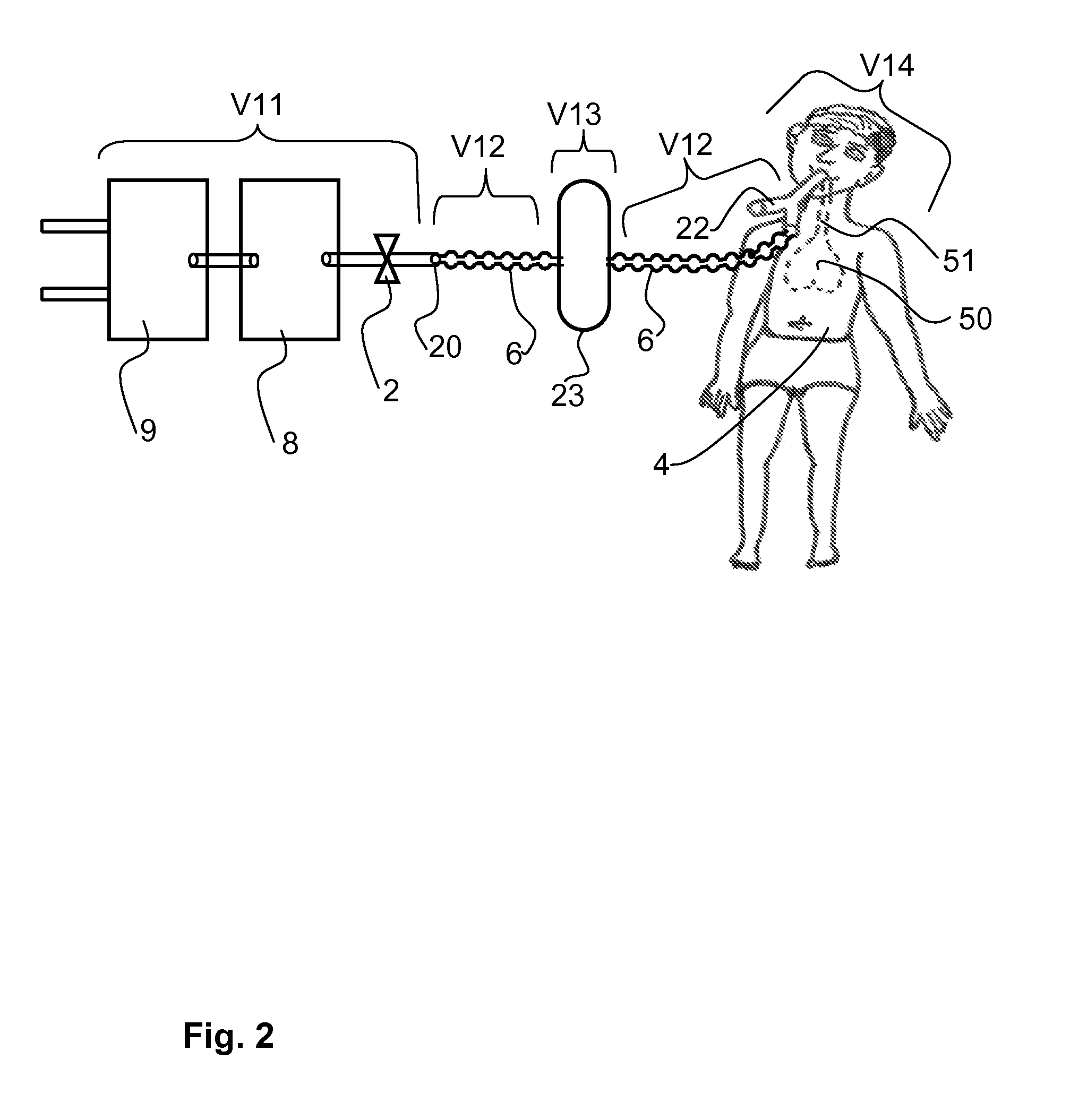Spo2 control with adaptive linear compensation
a linear compensation and control technology, applied in the direction of valve operating means/releasing devices, combustion types, lighting and heating apparatuses, etc., can solve the problems of unstable control characteristic, unacceptable physiological and therapeutic point of view, response time of oxygen metering that is not acceptable, etc., to achieve high oxygen saturation, prevent oxygen levels, and avoid eye damage
- Summary
- Abstract
- Description
- Claims
- Application Information
AI Technical Summary
Benefits of technology
Problems solved by technology
Method used
Image
Examples
Embodiment Construction
[0099]Referring to the drawings in particular, FIG. 1 shows a schematic view of the respirator, tube system, patient and oxygen saturation-measuring means. An inspiration valve 2, an expiration valve 3, an input unit 5, a control and regulating unit 7, a gas-mixing unit 8 designed as a tank and a gas-metering unit 9 are present as essential elements of respirator 1. A first gas supply port 91 and a second gas supply port 92 are provided for supplying oxygen and air into the gas-metering unit 9 of respirator 1. Gas is sent to a patient 4 from the respirator 1 during inspiration via a gas path 4 and a first gas port 20 and a Y-piece 22 and gas is sent to a patient 4 from the respirator 1 during expiration via a second gas port 21. The expired gas escapes via the gas outlet 96 into the environment. Gas path 6 is preferably designed as a breathing tube system with an inspiration tube 61 and with an expiration tube 62. A humidifying unit 23 is arranged in the gas path of the inspiration ...
PUM
 Login to View More
Login to View More Abstract
Description
Claims
Application Information
 Login to View More
Login to View More - R&D
- Intellectual Property
- Life Sciences
- Materials
- Tech Scout
- Unparalleled Data Quality
- Higher Quality Content
- 60% Fewer Hallucinations
Browse by: Latest US Patents, China's latest patents, Technical Efficacy Thesaurus, Application Domain, Technology Topic, Popular Technical Reports.
© 2025 PatSnap. All rights reserved.Legal|Privacy policy|Modern Slavery Act Transparency Statement|Sitemap|About US| Contact US: help@patsnap.com



